Fiction
Nonfiction
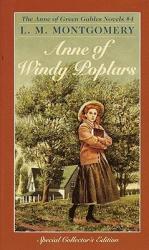
When Anne finishes her schooling at Redmond, she decides to start a new life away from Green Gables. She finds herself in her tower room at Windy Poplars, befriending two old widows, Aunt Kate and Aunt Chatty. She arrives at Windy Poplars looking for a job. She gets one as the principal of Summerside High School. Anne is then made aware that she was not the person they wanted as the principal, but they couldn’t find anyone better. Over time, Anne also becomes friends with the housekeeper, Rebecca Dew. Anne loves her students, but she greatly misses her lover, Gilbert Blythe, who is currently in medical school. Anne of Windy Poplars is a book in the Anne Of Green Gables series. It was less interesting and active than the other books, but it had a decent plot. I am a person who likes action and drama, but this novel did not satisfy me. Contrasting to the other books in the series, it was very drawn out and not very suspenseful. It left me with the urge to not continue reading. I want a book that makes me want to read more and never stop, but this did not meet those expectations. The only reason I kept reading was to keep the series going. I finally finished the book, and I’m glad I did. The storylines following Anne of Windy Poplars were much more interesting, but the books later on had flashbacks and connections to it.

The Virgin Suicides is the elegy of the Lisbon girls, from the perspectives of the neighbors that are still haunted by them. The Lisbon family lives on a quaint suburban street in the Sun Belt, drenched in sunlight and white-washed shingles. Then one year, every Lisbon girl, starting with Cecilia and ending with Mary, commits suicide. This book is the observations and meditations of the boys across the street, the ones who loved them, who obsessed over them, who objectified them, and who watched them die one by one. The girls are doomed from the opening lines. The only question that remains is why they did it, and why our narrators can't let them go.
I read this book because I was told it was a staple of dark academia. It is not, no one here likes school. In reality, it is a treatise on girlhood, in all its insubstantial suffering. The first thing that struck me was the way the author sets the mood immediately. The entire book is dripping with malaise, the suffocating nature of sisterhood and parenthood on full display whenever the Lisbon house is described. The brief gasps of outside life are bright and crisp, while the references to the current day, middle-age life of the narrators is sad and listless. I wouldn't say this book is pleasant to read, but it is gripping in its complete commitment to its mood and setting. On that note, the choice of the author to tell the story entirely from outside perspectives was fascinating. The narrator is only described as "we", as the group of neighborhood boys who obsess over the girls in both childhood and adulthood. One conflict in the book is wondering if we are meant to sympathize with the boys who are scarred from the suicides, or see them as a commentary on the ways that the world seeks to capture and define teenage girls. I ended up seeing it as the latter, which likely made me view this book in better light than many of my peers. The boys actions always have an air of perversion about them, and at the end they seem to realize that all their breaches of privacy and decency have brought them no closer to understanding the girls. Another thing I liked about this book is the way that the girls are given a kind of privacy of thought from the narrators and the readers. Every attempt at scrutinizing their reasoning or emotions or motivations is always followed by a caveat. Nothing is certain with the Lisbon sisters, just the way nothing is every certain when we view the actions of others. The unknowability of their tight knit group gives them a dignity that their neighbors and community seem to want to violate constantly. This book is also a clear censure of suburbia. The neighbors try to do their best to help when they can, but still grumble amongst themselves about the Lisbon family leaving the leaves in their yard the fall after their youngest commits suicide. The great debutante balls and dances of the south are in full swing, but there is an undercurrent of corruption and distortion to the dancing and dating. The sexualization of the girls is also rampant, which, again, makes the book a lot harder to enjoy if you don't see it as a choice by the author in order to comment on it. In short, the suicide of the girls seems like a catharsis, a response to the disgusting and decaying world around them. Everyone around them represses their emotions, from their parents to the boys enraptured by them to their teachers to their peers. They are the only ones who get to set something free. The juxtaposition of the wailing EMTs to the quaint, straining neighborhood further demonstrates their freedom, even in their death.
This book did have problems. A lot of stuff is uncomfortable to read, even if viewed as a deliberate choice. The story often takes winding tangents that serve little purpose besides demonstrating the boredom and trivialities of suburban life. Still, the book is still a fantastic meditation on what its like to be a teenage girl, in all the wonderful and ghastly ways. I would recommend this book to anyone who is looking for good setting, shocking stories, and a good mystery to carry with them!
Reviewer Grade: 12
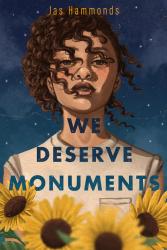
We Deserve Monuments follows a seventeen-year-old girl named Avery as her and her family leave Washington, D.C. to return to her mother's childhood home. Avery's grandmother is dying, but somehow her mother and her grandmother still can't bring themselves to reconcile over decade-old, hidden arguments. While Avery struggles to adjust to a new school and new friends, she must also try to untangle the deep roots of family resentment that could keep her family broken forever.
This book is beautifully done. The prose is something out of a dream, and stays light and airy in the same way that small towns seem to hover in a landscape. The past is interwoven into the landscape to create a truly textured story. Every moment is given the weight and wonder that it deserves, and is a glorious reflection on the raptures of youth. Honestly, my only issue is the plot. I feel like the story would've benefited from more focus on Avery and her family, and less on the drama with her friends. I appreciated it in the beginning, but I felt like things fell apart so quickly that I couldn't get invested in what was going on. Avery herself was sympathetic, but both her and every other younger character in the book makes some truly stupid decisions. It worked better for Avery, since it showed her struggling to grow up and be an adult in her family situation while still embracing her teenage years, but I'm not sure if anyone else has enough of an excuse. With the three generations being examined, I wished that Avery's mom had gotten more of a spotlight in the story instead of whatever was happening with the kids all of the time. The story was still tight, and I felt like the ending was deserved and poignant.
I know it sounds like I didn't like this book that much, but that's just because its a very well done story with lots of style and a lot of things to nitpick. My opening notes still stand: this is one of the most poignant and affecting books I've read this year, with a lot of heart and charm distilled into it. I would recommend it to anyone that wants to read some beautiful prose and cry over family!
Reviewer Grade: 12
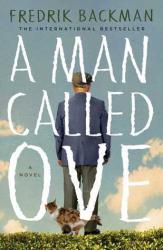
If you consider yourself an experienced reader, you can probably state that there are barely a few books in this world that can touch your heart. You went through hundreds of human fates written on thousands of pages; you can easily predict the plots of love stories or detective novels; you can easily identify what figurative devices the author used here and there to make you feel sad, hopeful or amused. You feel so confident and think that nothing in the literature world can surprise you anymore, but then… you open this book, A Man Called Ove by the Swedish author Fredrik Backman. The main character has nothing to do with standardized cliche characters that we’re used to. It’s an old grumpy man called Ove, who believes that nobody in this world knows how to do their job anymore, but instead everybody tries to get more money for less effort. Not only is he deeply convinced in this, he also never skips a chance to remind this to everybody he meets and to inform them as well which rules they have broken and which lessons they have never learnt. He lives all alone, even his wife has left him, and from knowing Ove for about 50 pages we think we know why. But then the curtain opens for the readers, and we learn a beautiful and tragic story of Ove and his wife Sonja. Two absolutely different personalities, who tied themselves together for life with bonds of love, patience, understanding and selflessness. But now Sonja is gone, she’s gone forever and Ove doesn’t see any sense in life anymore. He tries to commit a suicide several times to reunite with Sonja, but all of his attempts fail once the new neighbors move into the house next to Ove’s. An absolutely clumsy IT-specialist Patrick, his pregnant Iranian wife Parvaneh and two of their daughters change his life and become a barrier for all his pessimistic plans. Unexpectedly and against Ove’s will, he rescues a cat and becomes his owner; takes Patrick to the hospital by his precious car Saab; helps a teenager Adrian to fix a bike for the girl that he likes; lets a homosexual barista, who was kicked out of the house by his very conservative father, stay over; fights for Rune, the man who’s been his main opponent the entire life, against Men In White Shirts; teaches Parvaneh driving a car and buys an iPad for her older daughter. Even though he denies it, Ove becomes friends with the entire neighborhood, remaining just as grumpy, rude and straightforward as he’s always been. One day he almost dies and that puts an end for his attempts to get to Heaven prematurely. He finally realizes that there is life after death (after Sonja’s death) and there is always something to fight for.
An amazing book that will make you laugh and cry. Ove’s sassiness and barbed character will pull up a smile on the readers faces and his endless loyalty to Soja will move even the biggest skeptics.The characters are bright and strong individuals that follow their principles and show us the world of their beliefs, so different, but never false. This novel teaches us the importance of friendship and helping each other. It shows us that even in the darkest times of life we can find light in people around us.
Reviewer Grade: 12
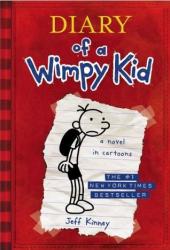
I absolutely love this book series. I started reading Diary of a Wimpy Kid when I was in elementary school when it got recommended to me by a friend. I have no regrets. Even today I still love reading these books. The art in them is exceptional and unique as well as the stories and writing. I have read everyone of these books in the series, but I still think that the first one is a classic.
Greg Heffley is an extremely unique character within the Diary of a Wimpy Kid series. The author of this book gives Greg an almost “cartoony” personality. At first, I didn’t like Greg, but he definitely grew to become my favorite character in the book. The first book in this series introduces Greg and all of the characters and hardships they face. I would 100% recommend this series. If you want to start the series, read this one!
Reviewer Grade: 8

The Lord of The Rings, Harry Potter, Hobbit and The Chronicles of Narnia have already won the hearts of millions of readers of all ages. Fantasy novels with complex plots, written in the understandable even for the youngest readers language, keep older generations excited and thrilled as well. The Fairy Tale by Stephen King can definitely be included in this honorable list. Describing the incredible adventures of Charlie Reade, it takes us to the mystical world and introduces to the ancient evil monsters and brave fighters for freedom.
Everything starts simple enough. The characters are living their ordinary enough lives and dealing with their down-to-earth duties and routines. But everything changes when a 17-year-old Charlie Reade decides to help his old grumpy neighbor. He discovers the door to the hidden world, where life is paralyzed by a curse that erases people’s faces and takes their sensations away from them. An evil tyrant Flight Killer and is the one who stands behind it. And, as it normally happens in fairy tales, Charlie turns out to be the one, whose mission is to defeat the evil, liberate the city of Lilimar and save the fallen princess. Is it truly up to a high-schooler to beat the powerful monster? And what does it have to do with an old ill German shepherd? The Fairy Tale has the answers for all these questions.
The audience gets a chance to dive into the exciting and cozy atmosphere of the good old stories, heard in childhood, and, at the same time, enjoy the complicity of created by King universe and charm of human feelings and behaviors. Classical fairy tale plot and motives make the novel easy and pleasant to read, however, as any fairy tale, it contains hidden moral and promotes eternal values.
Reviewer Grade: 12
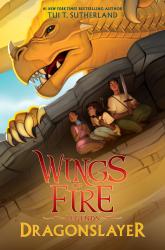
A quick summary of this book is that three kids, Wren, Leaf, and Ivy, all live in a world filled with dragons. Wren was sacrificed to the dragons by her village leaders but she escaped and befriended a dragon named Sky. Leaf wants to slay a dragon and take revenge on the dragons because he believes that the dragons ate his sister, Wren. Ivy is the dragonslayer's daughter and she starts finding the truth about what happened when her father slayed the dragon. Ivy starts to realize that her father is the entire reason the dragons hate humans. When Leaf comes to Ivy's village to seek out the dragonslayer, Ivy and Leaf decide to go to the desert dragons stronghold to find Ivy's lost aunt Rose and return the dragons treasure to them. On the way they meet Wren and together they find out the truth about how the dragonslayer actually killed the dragon and try to make amends for it.
This book was one of my favorite books of the entire Wings of Fire series. It has a ton of amazingly portrayed action scenes. Tui T. Sutherland, the author, did a marvelous job of using imagery to make you feel as if you are in the book. I also really enjoyed how all the books in the series are connected. You see characters from other books such as a Nightwing named Deathbringer, who is from the Dragonet prophecy series and also the second Winglets book. My favorite character is probably Wren because she is so brave, courageous, resourceful, and smart. I also love Sky, Wren's dragon, that she befriends. He is so adorable and kind of funny at times. There was nothing in the book that I didn't like. Over all this book is one of the best ones I have read this year. I recommend this book to anyone who is interested in dragons or fantasy/adventure. (8th grade)

Flowers for Algernon is stunning commentary on the way society perceives intelligence and its connection to personal value. The creative liberties taken with this book to modify diction to match Charlie Gordon's knowledge create a more personal connection with the beloved narrator. I found myself celebrating the first time he used a comma or a metaphor. Although this book was difficult to read at first, I understand that those creative choices enhance the impact of the story later on in the book. The reason I wouldn't call Flowers for Algernon perfect is I feel some of the development in the middle diverted from his climactic conversations with the doctor and professor. The story seems to split into two at once: one of Charlie's emotional intelligence struggling to keep up with his knowledge, and one of his environment's reactions to his sudden genius. Though I enjoy both perspectives, I feel the conjunction creates clutter in what could be one flawlessly streamlined story. However, both stories are executed beautifully, and the journey of Charlie Gordon is both profound and emotionally charged. Flowers for Algernon is certainly a novel I'll mull over in years to come.
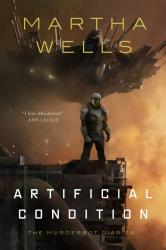
After being disappointed with the length of the first entry in the Murderbot Diaries series, I'm glad that I stuck with it and read the second book, Artificial Condition. While All Systems Red was necessary to introduce the concept of a sentient (and pacifist) murderbot, this book was much more interesting from a narrative perspective. At this point, I'm used to the short length of these stories, but after reading this book now I have to know how the rest of the series plays out.
The titular murderbot in this book felt much more fleshed out (ha ha) as a character. Having moved past the phase where it recognizes that its sentience is an anomaly, the challenge of fitting into society as a murderbot or as a human as the circumstances warranted was much more enthralling. The interactions with other AI like ART were much more entertaining than merely hearing about how the murderbot liked to binge TV shows. Perhaps the fact that much of the exposition covered in the first book is now out of the way, I felt this book didn't feel as much like an info dump.
Now that the murderbot is on its own, the goal of learning about its past is something that is not only interesting to read but provides a lot of opportunities for great action sequences. The author expertly puts the main character in situations where it has to use its AI advantages to make life-saving decisions despite the core code of its being originally designed to kill humans. The amount of character growth from the first book to the end of this one is definitely what will bring me back to finish out this series.
An improvement from the first book in the Murderbot novella series, I give Artificial Condition 4.5 stars out of 5.

Although I was skeptical at first, I quickly fell in love with the bizarre world of Dellecher and its fourth-year theater students. The worldbuilding and three-dimensional characters transcended expectations. I read this novel in a mere 3 days, and it didn't take long to get me hooked. I'm obsessed the way these students were with Shakespeare. Unfortunately, this beautifully written novel has some glaring flaws that it wasn't poetic enough to cover. The plot started off strong but lost its way in the whirlwind of the theater world. It veered towards a tangled romance before reluctantly wandering back to its roots abruptly before the novel ended. I would've liked more development in any and all realms besides Oliver and Meredith. In fact, I would happily read a series of books detailing these seven students' journey through university. After about six hours spent reading, I feel I only have a vague idea of these characters, and I'm on the edge of my seat for more. Regardless, it was a thrilling ride, and I'm optimistic for Rio's other works.
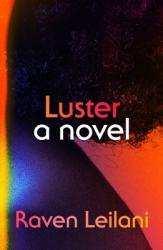
If it weren’t so gorgeously written, it’d be too wincingly real to read. I felt deeply connected to Edie in all her messiness and compulsive curiosity. Leilani’s characters are all their own: weird, self-possessed, sort of perverse, clearly loved into being.
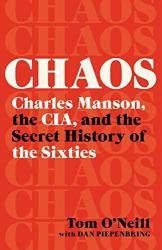
O'Neill's 20-year investigation succeeds at systematically breaking down an impressive amount of the infamous case's centrifugal details and characters, many previously unknown, untold or cast as insignificant. The guy's manic fixation is contagious. The only thing I found unnecessary was the frequency and extent to which O'Neill expressed self-doubt in the 'coda' sections of many chapters, second guessing "where it all goes." It doesn’t matter that there aren’t neat ends; his scrutiny has produced more than enough evidence not only to explode the popular understanding of the details surrounding the Manson story, but also suggest far-reaching implications for all of us in the process.
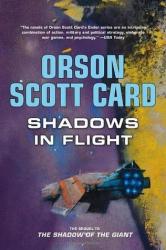
You know how sometimes a series has overstayed its welcome? How, even though the author has wrapped up most of the loose ends, there's another story afterward that only exists to extend the series even farther than it has already come? The only times I can forgive these extensions is if the story in question isn't particularly long. For instance, the "epilogue" story in Marissa Meyer's Stars Above is a great way to show the characters settling into normal life after the main conflict ends. Shadows in Flight is almost unnecessary, but at least it's short.
Shadow of the Giant was a satisfying conclusion to the Ender's Shadow saga, so the fact that Shadows in Flight exists is merely to wrap up Bean's story even if the rest of the world had already reached its peaceful conclusion. After all, one question remained from this series: can those with Anton's Key be cured of their premature death and still keep their incredible gifts? This story sets out to answer that question and give Bean the (second) send-off he deserved. Fortunately, it's a relatively short book, since there isn't much else to say on the matter.
The problem is, there's nothing particularly new in this book when compared to the other eight books in both the Speaker for the Dead and Ender's Shadow series. This is perhaps because the three new characters (Bean's children) were repeated archetypes from their respective namesakes. It's always nice to have a little more content in the Ender universe, but even I think this feels like a post-it note scribbled on the back of the end of the series.
Wrapping up the final loose ends of the Ender's Shadow saga, I give Shadows in Flight 3.0 stars out of 5.

A tragic circumstance brings together the town of Azure Springs and Sheriff Reynolds as they seek to find the individuals who badly injured a young woman. Em, orphaned at a young age, and having spent seven difficult years with a guardian, comes to know the caring people of Azure Springs as it becomes apparent that her life is still in danger. A real page-turner that pulls you deep into Em's life and Sheriff Reynolds who will stop at nothing to secure justice for her.

Backstory can often be a difficult element to work into a series. To keep the action in the present and moving forward, there’s rarely time to go into the background of the characters, let alone the main character of the series. This is why side stories like Fairest and The Wind Through the Keyhole exist. There’s a subtle need to explore the troubled past of a main character, but to get into the depth of their backstory requires a significant amount of words that won’t fit into already full books in the main series.
In The Wind Through the Keyhole, Stephen King lets the reader see the origins of Roland the Gunslinger. What’s interesting here is that King does so in a series of nested stories, almost evoking something from Inception (2010) or Cloud Atlas. After all, a single story hardly affects real people but is instead a string of interactions that themselves were influenced by the past events of other characters’ lives. And while knowing these stories doesn’t add to the whole of the Dark Tower series, they confirm some things that Roland alluded to from his past.
With many moments in the core Dark Tower series being used to show character development for the rest of the members of the ka-tet, The Wind Through the Keyhole provides the foundation for the titular Gunslinger that was mostly missing from the main series. Considering that King wrote this book almost a decade after the series concluded, it’s no wonder that the universe of Mid-World feels as rich as ever in this side story. Adding this mid-series book after the fact meant that King still had more to clarify and The Wind Through the Keyhole definitely delivers.
A Dark Tower side story with plenty of character background, I give The Wind Through the Keyhole 4.0 stars out of 5.
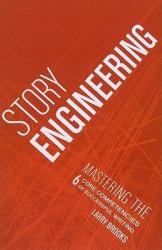
Every successful author eventually concludes that they have something to provide for the neophytes of the craft. The problem is that the most insight any individual author might provide for someone who wants to get into writing stories has probably been said before. In Story Engineering, I was hoping for some useful tips on structure but instead was accosted with incredibly biased opinions from the author (and his obsession with a handful of books). He seems to think there is only one singular way to be successful and his book is the only way to understand it. I’m used to biased non-fiction, but not nearly this much of it.
I think that all writing methods have their benefits and downsides, but if you were to corner the author and ask him about pantsers (i.e., people who write by the seat of their pants via “exploratory writing”), he’d probably admit that they murdered his mother. In describing his successful publishing endeavors, I got the sense that the author didn’t realize that he was incredibly lucky to have achieved the successes he did, cementing in his mind that it was the only way to be successful. The irony is how he includes several examples of successful authors who follow the pantsing method and how their books still abide by this stringent Story Engineering structure.
When I see the idiom “burying the lede,” I often think of clickbait articles or newspaper columns that take forever to get to the point. This is the first time I’ve encountered burying the lede for an entire book. It takes forever for the author to get to the point, and by then it’s difficult to remember what we were even supposed to glean from it. There might be some useful information here, but it’s so bogged down in obvious things that every other author who has written a book on writing has already said.
No new writing tips in extremely biased non-fiction, I give Story Engineering 2.0 stars out of 5.
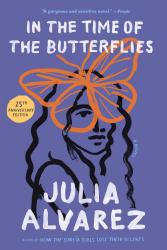
In the Time of the Butterflies by Julia Alvarez is a fictionalized account of resistance to the dictatorial rule in the Dominican Republic inspired by the stories of the three Mirabal sisters who were murdered in 1960. Alvarez expertly captures the terrorized atmosphere of living in a police state and the courage of a few to stand up in resistance. Despite the underlying anguish and dread, the novel is brimming with romance, hope, and faith as Dominicans try to find life under a dictator. Suppose you want a captivating novel enriched with courage, feminism, and intimacy and are willing to read a challenging narrative to stomach. In that case, this anxious page-turner will not disappoint.
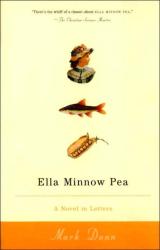
I thoroughly enjoyed this novel. The writing style was brilliant, telling the story through the use of several different character’s perspectives using everyday letters exchanged to each other. I haven’t laughed out loud from a book in a long time but it was hilarious and I found it hard to put down. I was so intrigued to find out what would happen next. The author did a great job framing the society and depicting the way it snowballed from reasonable into totalitarianism. The unfolding of events had perfect pacing and just all around this book is a quick fantastic read.

This book is the perfect example of a great concept with poor execution. It is about a bunch of kids trapped in a grocery store amid an apocalypse, and trust me, it isn’t as good as it sounds. First of all, the worst thing in this book was the handling of 13 year old Sahalia, at least in the beginning. Her character in itself was creepy and unnecessary. Under no circumstances should a character who is only my age be described like that. She was handled well in the very end, but that’s about it. Besides that glaring issue, the rest of the book is flat at best. I will definitely not finish this series. (8th grade)

This book is about a girl named Melody, who has cerebral palsy. The internal monologue and messages throughout the book are extremely wholesome. This book is a great lesson for numerous reasons especially for teenage readers. The audience for this book is more directed towards teens, but I believe anyone can read this and truly appreciate the novel. The book is extremely well written and enjoyable. One lesson in the book is essentially saying everyone needs a friend. Melody is an outcast due to her disability, and her inner thoughts show how much depth her character has. If you’re looking for an amazing read, I highly recommend picking up this book!



 Ruth Holley Library will be temporarily closed for approximately one week starting Mon., Dec. 2 to complete roof repairs.
Ruth Holley Library will be temporarily closed for approximately one week starting Mon., Dec. 2 to complete roof repairs.